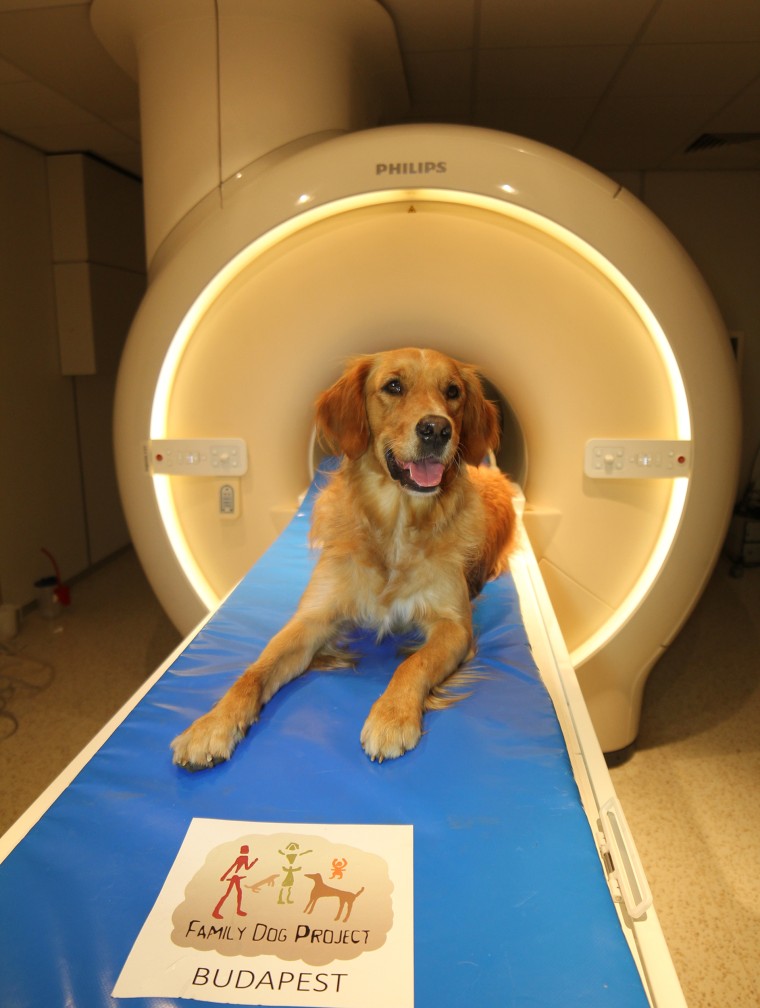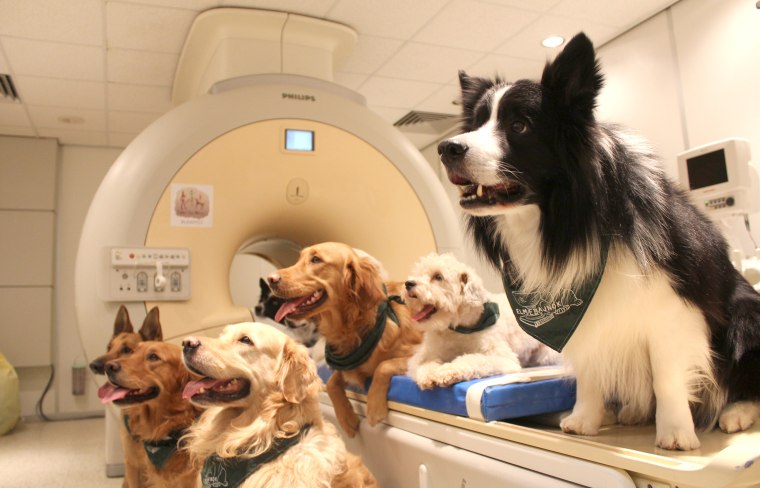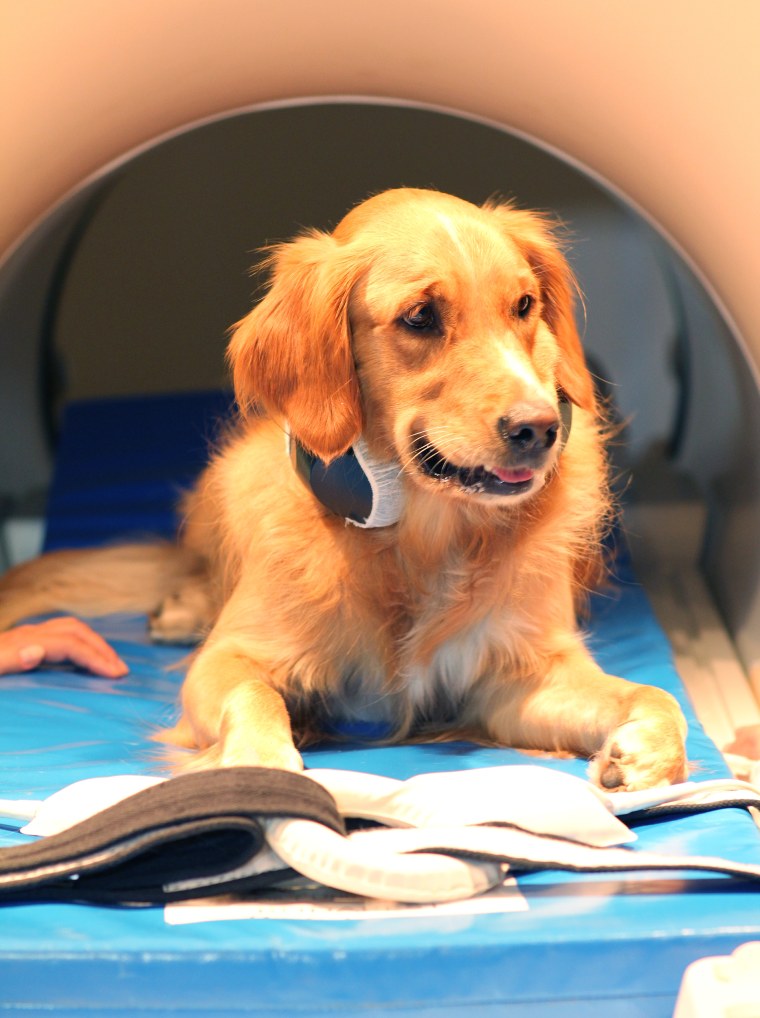Many dog owners treat their good boys and girls just like they might care for a tiny human. But a series of recent studies showed that dogs don't perceive faces and speech the same way people do.
While this might sound sad to the people who love their pups, it gives researchers better insight into how canines think and could help lead to better training.
“These are critters that live with us on a day-to-day basis,” M. Leanne Lilly, an assistant clinical professor in the Ohio State University College of Veterinary Medicine who did not participate in the study, told TODAY. “Understanding how they process that environment is undoubtedly going to help us lead better lives with them.”

In two different studies in the series, researchers looked at how dogs understand human faces and speech by using fMRI, a kind of brain scan that tracks cerebral activity by examining blood flow. All the dogs in the studies went through special training to be able to sit through the imaging without moving.
In the study about recognizing human faces, two groups of dogs — one with 13 dogs the other with 11 dogs — looked at photos of people’s faces. The research, published in the journal Frontiers in Behavioral Neuroscience, used images with scrambled human facial features versus regular photos. The researchers wondered if dogs perceived human faces like primates do, meaning they recognize people mainly by their noses, eyes and mouths. But the pooches had a hard time differentiating the two, meaning they don't read images of faces the same way humans do.
“The dog brain may not have the same tools to process the inner parts of the face (only eyes, nose, mouth),” Dóra Szabó, a graduate student in the ethology department at Eötvös University in Hungary, told TODAY via email. “The findings are in line with previous behavioral studies, which also reported that dogs cannot recognize their owners based on their inner faces without specific training.”

While this news might devastate some dog owners, who are certain their pups recognize them, Szabó says this doesn’t mean human’s best friends are clueless about their people.
“Dogs are doing fine with getting information from people's faces, they just may not use the same mechanism or brain areas as humans,” she said. “Plus, we usually do not only display our emotions on our inner faces (alone); we talk, we move, we sweat.”
Lilly notes that dogs were looking at pictures, not actual faces, so the results indicate how dogs respond to photos.
“It means that dogs probably don't recognize pictures of us the way that we do, which is probably not having that big of an impact on them,” she said. “I don't think it's going to change a lot of how we interact with our dogs.”
Another study, published in the journal Scientific Reports, looked at how dogs perceive human speech. Researchers examined how 12 dogs understand who is speaking by having the pooches listen to people say real or nonsense words. While dogs used different areas of their brains than humans to determine who is talking, dogs still can tell the difference.
“Dogs live in an environment that is rich in speech and we communicate with them by talking to them,” Marianna Boros, a post-doctoral researcher at the neuroethology communication lab at Eötvös University in Hungary, told TODAY via email. "It is therefore important to understand what elements of speech they can process."

“Dogs pay attention more to who is speaking and less to what speech sounds they say," she added, and knowing this can help owners better train their dogs.
Having this insight into how dogs respond to humans in real-time has another important function. The findings from such studies could also help researchers better understand diseases that affect both humans and dogs, such as dementia.
“If we can learn things from dogs that help make dog life -- and human life -- better, then that's important," Lilly said. "Understanding how the brain works in dogs has merit in that regard."
Follow TODAY Health and Wellness on Facebook and subscribe to our newsletter "One Small Thing" for easy tips to improve your life every weekday.